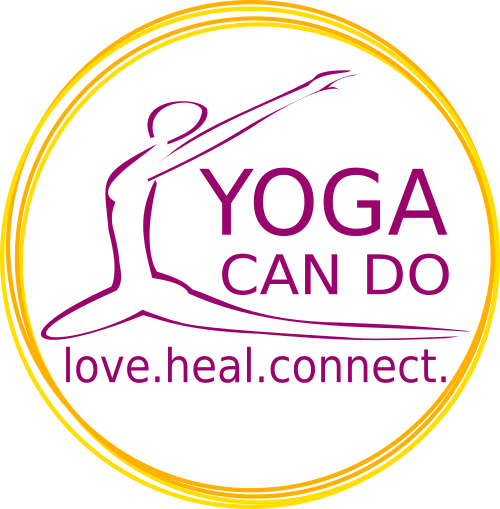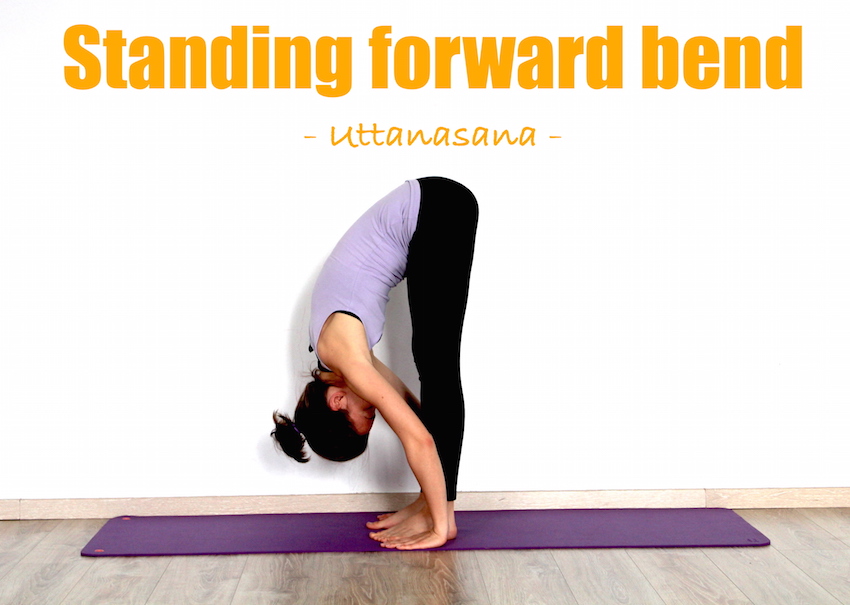Sanskrit Name
In Hatha Yoga: Padahastasana (Pada= foot, Hasta= hand)
or in Ashtanga Yoga: Uttanasana (Uttana = intense)
How to do standing forward bend
Start in Tadasana(Mountain), building a good foundation for the pose. Stand with the feet hip width apart.
Inhale and raise your straight arms over your head, palms are facing each other. Keep your arms active until the fingertips. Bring your shoulderblades together and shoulders away from the ears. Lift yourself through the crown of your head up to the sky, lengthening the spine.
Exhale and start to bend forward starting with your hips. Bend down as far as you can with a straigh back. Keep your legs straight, lift your kneecaps up. If possible place the hands on the ground or let them easily hang down. You can also interlace your arms.
Take care not to lean backwards, keep your body weight over the balls of your feet. The muscle strength comes from your legs not from your torso. This is relaxed and hangs freely down to the floor, feeling how gravity works on lengthening your spine. Keep your head relaxed without tension in neck or shoulders. Observe how with every exhalation the gaps between your vertebra in the cervical spine opens.
Start with holding the pose for several breaths and with practice increase the time to one minute.
To come out of the pose, slowly roll your body up with an inhalation, vertebra for vertebra. Your head lifts up at last.
Special focus on
Body weight is slightly shifted forward. Strong legs.
Neck and head: keep it relaxed. Try to release tensions with every exhalation.
knees: if you have any knee issues, overextend or lock, keep a microbend. But keep the backside of the leg stretched and active.
Benefits
- Calms the brain and helps with frequent headaches
- relieves stress and mild depression
- Stimulates the liver and kidneys
- Stretches the hamstrings, calves, and hips
- Strengthens the thighs and knees
- Improves digestion
- Reduces fatigue, anxiety, insomnia
Contraindications
back injuries: don’t do the pose or try it with your knees bend, bend half way down, keeping the straight arms parallel to the floor and supporting the hands on a wall

